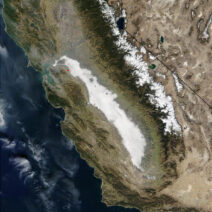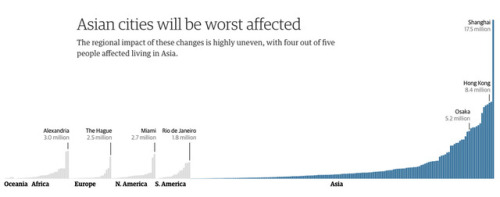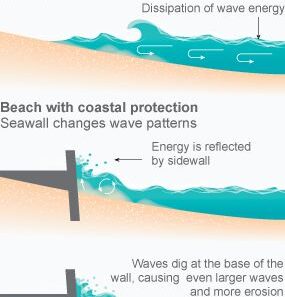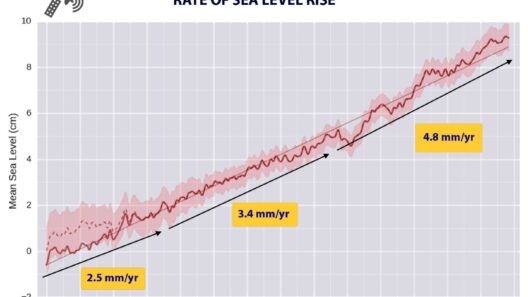Climate change stands as one of the most pressing challenges of our time, with rising sea levels threatening countless urban areas around the globe. As polar ice melts and ocean temperatures rise, the stability of coastal cities is increasingly jeopardized. This article delves into the cities most at risk due to rising sea levels, exploring the multifaceted implications for residents, infrastructure, and future urban planning.
Understanding the causative factors of rising sea levels is essential in identifying those urban areas that are especially vulnerable. Primarily, thermal expansion of seawater and ice melt from glaciers and polar ice caps are responsible for this phenomenon. Many cities, especially those located in low-lying coastal regions, face the dual threat of flooding and erosion. Moreover, the socio-economic factors at play compound these risks, as poorer communities often lack the resources to adapt or respond effectively.
Let us navigate through some of the most affected locations worldwide, elucidating the unique challenges they face.
The Low-Lying Danger Zone: Major Cities Affected by Rising Tides
Among the most vulnerable urban areas, several cities stand out due to their geographical positioning and demographic pressures. Cities such as Miami, New Orleans, and New York are especially at risk. Miami, situated on the Florida coast, is probably the poster child for rising sea levels. With much of the city at only a few feet above sea level, scientists project that Miami could experience a significant increase in flooding incidents by the mid-21st century. The porous limestone foundation also exacerbates the issue, allowing saltwater to infiltrate the drinking water supply, creating a public health crisis.
New Orleans, a city with an intricate levee system, is also on the frontline of this battle against nature. The catastrophic consequences of Hurricane Katrina serve as a haunting reminder of how climate events can devastate urban landscapes. With rising sea levels, the challenges of maintaining levees and flood defenses become more daunting, prompting a re-evaluation of urban resilience strategies.
Across the Atlantic, cities like Amsterdam and Venice experience the dual threats of sea-level rise and subsidence. Both cities are renowned for their picturesque canals, but this beauty hides a precarious situation. Amsterdam, renowned for its innovative water management techniques, faces challenges as the North Sea encroaches upon its limits. Venice, on the other hand, is constantly battling the tides with its flood barrier projects, yet these efforts face operational issues alongside rising sea levels.
The Pacific Rim: Island Cities and Atoll Nations
Shifting our gaze to the Pacific Ocean, we encounter island cities and atoll nations more acutely affected by sea-level rise. Cities such as Honolulu, Jakarta, and Dhaka face unique challenges due to their geographical vulnerabilities. Honolulu, while often viewed as a paradise, grapples with rising waters that threaten its beaches and tourism industry. The Hawaiian Islands are under constant threat from the Pacific’s relentless waves, necessitating extensive coastal management solutions.
Jakarta, one of the world’s fastest-sinking cities, combines rising sea levels with severe groundwater extraction, leading to alarming land subsidence rates. This combination poses a significant risk to the metropolis and its economy. Furthermore, the Indonesian government is considering relocating the capital to better protect its populations from flooding.
Dhaka, the capital of Bangladesh, exemplifies how high populations in low-lying areas can exacerbate the effects of climate change. As one of the most densely populated cities globally, it is no stranger to flooding, and the rising waters pose existential threats to millions. With an inadequate drainage system and heavy rainfall, this city faces dire challenges in managing both human and environmental impacts.
Planning for Resilience: Strategies for Mitigation
As cities confront these imminent threats, innovative urban planning and sustainable practices emerge as vital components of resilience. Adaptation measures such as constructing sea walls, restoring natural barriers like wetlands, and implementing sustainable urban drainage systems are essential. Moreover, rethinking urban design to prioritize green spaces and permeable surfaces could mitigate flooding impacts effectively.
Community engagement and education play fundamental roles in fostering awareness of climate change impacts. Governments should prioritize sharing knowledge about local risks and encouraging public participation in climate resilience initiatives. Collaborative efforts between public and private sectors can lead to innovative solutions that enhance both infrastructure and community capacity.
Moreover, investing in renewable energy and reducing carbon emissions need to be part of the solution to curb further climate change effects. Urban areas intentionally transitioning towards sustainability and decarbonization may find themselves better positioned to manage the risks posed by rising sea levels.
In conclusion, the threat of rising sea levels is pervasive, impacting both large coastal cities and small island nations. Acknowledging the cities most at risk provides critical insight into the urgency for climate action. While the challenge is monumental, coordinated efforts towards effective urban planning, community engagement, and sustainable practices may yet prove to be viable pathways for resilience. Individuals, policymakers, and communities must join forces to navigate an uncertain future while safeguarding their urban environments for generations to come.







